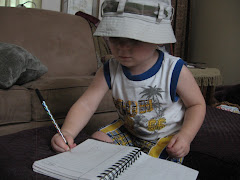Schertle, A. (2009). Button
up! Wrinkled rhymes.. Ill. P. Mathers.
New York , NY
What would your clothes say if they could talk? In Alice Schertle’s Button Up: Wrinkled Rhymes, we find out what the clothes of young
children would say. Winner of the Lee
Bennett Hopkins Award for Poetry in 2010, Button
Up personifies pieces of clothing from hats and shoes and bicycle helmets
to swimsuits, jammies, and costumes.
Perfect for preschoolers and early elementary children, the sentiments
of these pieces of clothing will be understandable and meaningful. And don’t be surprised if after reading these
poems, the young ones ask you what their
undies are saying.
Emily’s
Undies
We’re
Emily’s undies
with laces
and bows.
Emily shows us
wherever she goes.
She doesn’t wear diapers,
not even to bed.
Now she wears undies
with ruffles instead.
We’re Emily’s undies,
fit for a queen,
the prettiest undies
that anyone’s seen,
and everyone’s seen
our laces and bows
because Emily shows us
wherever she goes.
The poems in this volume made me think about my own little
girls – who are 28 and 29 now – and how excited and proud of their ruffly
undies they were to the point of needing to show them to everyone. So while the little ones will enjoy the
rhyming, rhythmic poems, so will the moms and grandmothers who might read the
poems to their children and grandchildren.
Vocabulary in the poems will also provide some new
experiences for young children. Joshua’s
jammies don’t fit penguins, bears, or tigers, but neither do they fit iguanas,
gnus, or llamas. The rhymes and rhythms
are exceptionally pleasing to the ear, and the repetition of words and phrases
provide predictable patterns for young readers.
Many of the poems, as illustrated above in Emily’s Undies begin and end with the same phrases. After reviewing this book, I’m anxious to
read it with Corbyn who is beginning to read fairly well now. I believe he will find some success in
decoding and comprehending the words on these pages by using the word patterns
and the context of familiar objects and situations.
The cover of this book also caught my attention. From the cutest buttoned-up ostrich on the
front to the butterflies that flitter from the front to the back cover, Petra
Mathers’s illustrations complete the poems to perfection. Button
Up! is a wonderful addition to any
young children’s class or the collection of books parents have at home.







